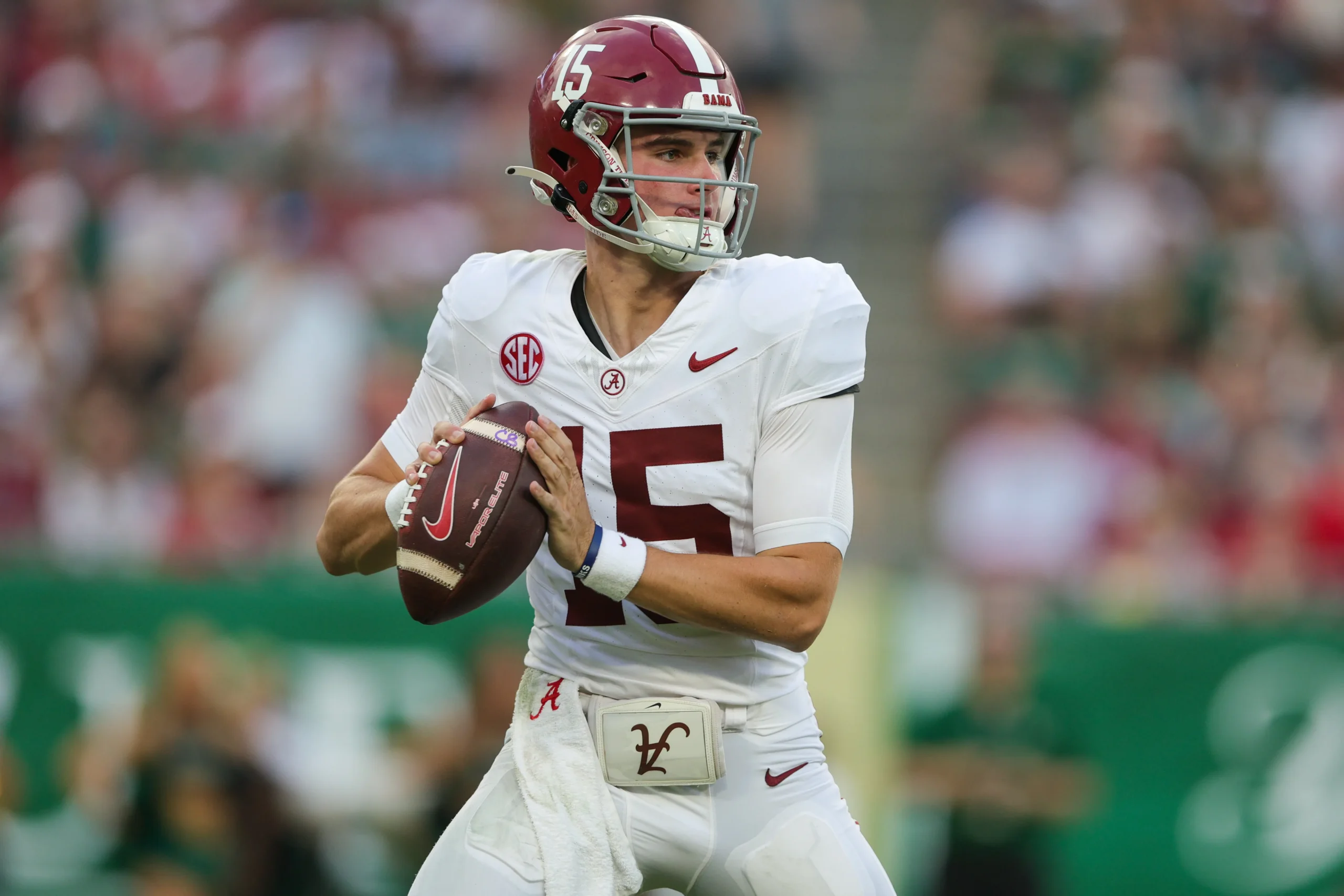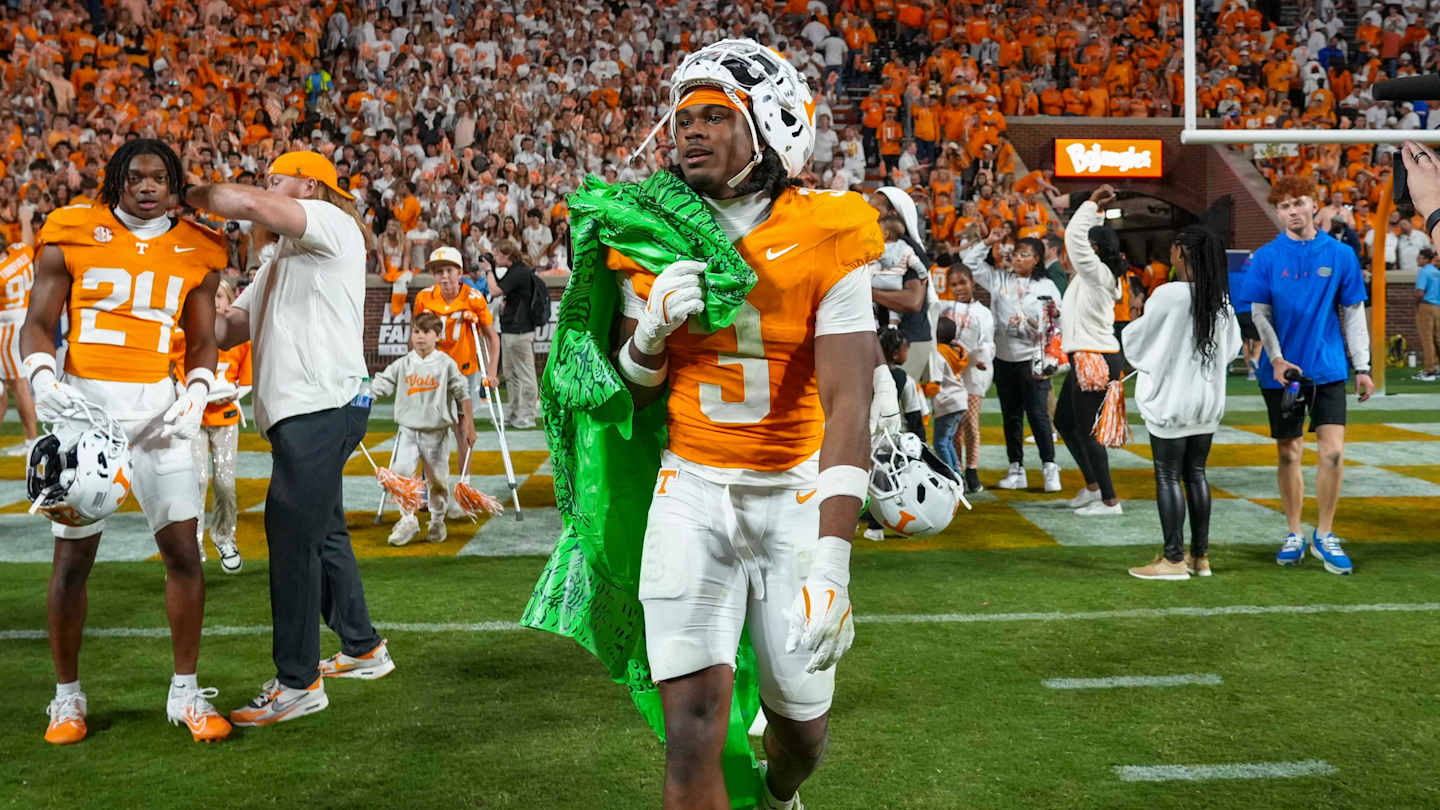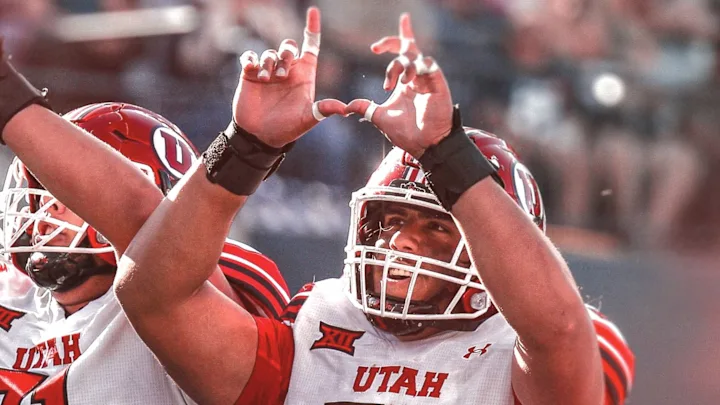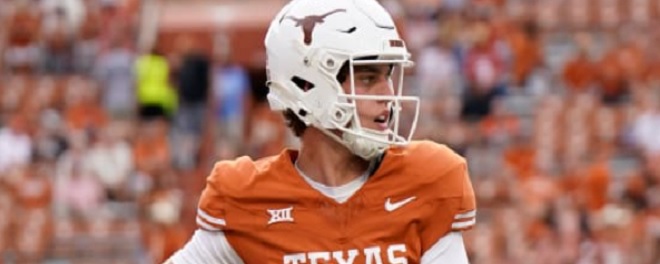By Charlie Campbell.
Send Charlie an e-mail here: [email protected]
Follow Charlie on Twitter @draftcampbell for updates.
This page was last updated April 14, 2017. Follow me @walterfootball for updates.
Position Review: Offensive Tackles
Offensive Tackle Class
Early-round talent: C
Mid-round: D-
Late-round: D-
Overall grade: D
2017 prospects vs 2016
Laremy Tunsil
Ronnie Stanley
Jack Conklin
Cam Robinson
Taylor Decker
Garett Bolles
Ryan Ramczyk
Germain Ifedi
Jason Spriggs
David Sharpe
Shon Coleman
Le’Raven Clark
Dion Dawkins
Antonio Garcia
Taylor Moton
Roderick Johnson
Offensive tackle could feature the worst class in the 2017 NFL Draft. There is a huge lack of talent at the position, and this year’s group is viewed as having only three players with starting left tackle potential early in their NFL careers. Last year’s class was much more talented.
If you were to merge the two classes, Tunsil would be the best prospect. He was among the best players at any position for the 2016 NFL Draft and only slid because of a video of him taking a bong hit was leaked right before the start of the draft. Tunsil was a better prospect than Stanley or Conklin even though they went ahead of him, and Tunsil played better than they did last season.
In my opinion, Cam Robinson is a better prospect than Conklin, but won’t go as high as Conklin did. Both could be very good right tackles, and at least decent left tackles in the NFL. I think Robinson has more athleticism and upside while Conklin is more consistent, but less physically talented. Conklin had a fine rookie season on the right side for Tennessee. Bolles and Ramczyk are more athletic than Decker, but Decker had a lot more experience and was safer. Hence, he probably ends up going higher in his draft class than Bolles or Ramczyk will this year.
Team sources think that Sharpe could be a second-round pick like Spriggs. Third-round picks Coleman and Clark were better prospects than Dawkins, Garcia, Moton or Johnson.
Safest Pick: Garett Bolles, Utah

I think Bolles has a good skill set, and after a rough start in life, he was determined to make something of his talent. Bolles is a good athlete with the quick feet, agility, and length to handle speed rushers at left tackle. He needs to get stronger as a run blocker, but he does have a mean streak and gets after defenders. Once he spends some time in an NFL strength and conditioning program, I think Bolles could become a good pro left tackle.
My track record here is mixed. Tunsil had a good rookie year and is moving to left tackle for Year 2. Flowers got off to a nice start in 2015, but had a highly criticized 2016 season. Matthews has turned into a good left tackle for Atlanta, and I was wise to pick him over Greg Robinson, who went second-overall that year and is on his way to being a huge bust for the Rams. I was wrong about Joeckel as he was a giant bust for the Jaguars.
Previous Picks
2016: Laremy Tunsil
2015: Ereck Flowers
2014: Jake Matthews
2013: Luke Joeckel
Biggest Bust Potential: Roderick Johnson, Florida State

Some project Roderick Johnson to go on the second day of the 2017 NFL Draft, while I think he should be a late-rounder. Johnson lacks strength and doesn’t generate any push in the ground game. He ties up his blocker, but is not a force at the point of attack to push a defender out of their gap. In pass protection, Johnson has the athleticism to protect against speed rushers, but he is weak to block inside moves and gets bull rushed too easily. Even undersized speed rushers have success bull rushing him. Johnson is a finesse player, and I think he is going to get pushed around in the NFL.
My track record here is pretty good. Fluker didn’t work out for the Chargers and was cut before his rookie contract expired. Kouandjio was a disappointment for the Bills, and they need to upgrade his position. Collins hasn’t been a bust, but he has played guard because of the team he went to. It is too early to pass any judgement on Coleman.
Previous Picks
2016: Shon Coleman
2015: La’el Collins
2014: Cyrus Kouandjio
2013: D.J. Fluker
Offensive Tackles Rankings by Attributes
Pass Protection:
NFL prototype: Joe Thomas, Browns
- Garett Bolles
- Cam Robinson
- Ryan Ramczyk
- Antonio Garcia
- Dion Dawkins
- David Sharpe
- Taylor Moton
- Roderick Johnson
Recap: Franchise left tackles have to be rock solid in pass protection. Most teams feature a right-handed quarterback, so the left tackle has to be trusted to shut down pass-rushers coming from the blind side. Joe Thomas is the top offensive tackle in the NFL and is the current gold standard for a franchise left tackle.
The best strengths for Bolles come in pass protection as he is very reliable at protecting his quarterback. Bolles has a lot of good qualities that could lead to him being a starting left tackle in the NFL. He is quick out his stance, is very athletic, has quick feet, agility, and an impressive ability to bend at the knee. In pass protection, he can play the type writer with his feet and shuffle with speed rushers. Bolles gets depth in his drop as well. He reacts quickly to stunts and shows good awareness to help his teammates when he doesn’t have a man to block.
As a pass protector, the issue for Robinson is consistency. He has excellent athletic ability with good feet, length, agility, and bending skills to be a left tackle. However, he doesn’t play consistently up to his skill set. The flaws in execution are the point of improvement for Robinson in the NFL. He needs to continue to work on his feet and bending to not lunge after defenders while being ready for inside moves.
The best strength for Ramczyk comes in pass protection as he is very reliable at protecting his quarterback. Ramczyk has a lot of good qualities that could lead to him being a starting left tackle in the NFL. He is quick out of his stance, fast to hit blocks in the second level, and is able to get in position for blocks in space. In pass protection, he can play the type writer with his feet and shuffle with rushers. Ramczyk gets depth in his drop as well. Sometimes though, he can be slow to react and adjust to counter pass-rush moves. Ramczyk also needs to add more strength. He can get bull rushed and pushed back by rushers. His frame doesn’t look maxed out, however, and he should get stronger in a NFL strength and conditioning program if he is dedicated to being the best he can be.
From a skill-set perspective, Garcia has good tools. He is quick, long, agile, and has good feet. He definitely has the athletic ability to be a blind-side protector. However, Garcia is inconsistent, raw and needs a lot of work on technique. He also has developmental issues that could hold him back.
Dawkins is a good athlete with quickness and agility. He lacks length, however, and that could push him inside to guard in the NFL.
Sharpe is a giant with surprising feet and agility for such a big blocker. He had a lot of good stretches for the Gators at left tackle last year, but he can be prone to hiccups. Sharpe would be better off at right tackle in the NFL. Moton also is a right tackle for the NFL. He will need some help with pro speed rushers.
Johnson has athleticism with quickness and feet, but he gave up a lot of sacks last year. Some of them were in extremely ugly fashion. I wouldn’t be surprised if he gets repeatedly manhandled in the NFL.
Run Blocking:
NFL prototype: Joe Staley, 49ers
- Cam Robinson
- David Sharpe
- Taylor Moton
- Garett Bolles
- Ryan Ramczyk
- Dion Dawkins
- Antonio Garcia
- Roderick Johnson
Recap: Robinson is a plus run blocker at left tackle. He isn’t a finesse tap-dancing left tackle who is weak in the ground game. Robinson doesn’t have overwhelming power, but he is very good at latching onto defenders and turning them to open up holes. He is strong to sustain his blocks and you will see him ride some defenders around the field. There is no doubt that Robinson has some heavy hands where defenders have a very difficult time shedding him once he gets locked on them. He also has the quickness and athletic ability to hit blocks on the second level. Over the past three seasons, Alabama had a lot of success running behind Robinson.
Sharpe is close to being the best run blocker in this group as he has the most power at the point of attack. He can push defenders out of their gaps and open holes in the ground game. That is one of his best traits in a projection to right tackle. Moton is similar in that he is strong at the point of attack and can push defenders around. He isn’t as nimble or quick to the second level.
In the ground game, Bolles is an effective blocker, but helacks power and strength. Bolles does have a mean streak though, which is a rare sight in the uptempo spread offenses that are dominating college football. Bolles is good at sustaining his blocks and keeping his defenders from making tackles. He is quick to the second level, can hit blocks in space, and is agile in the open field. Bolles isn’t a blocker who blasts defenders off the ball, but he is effective at manipulating them and turning them to open up holes for his back. Bolles has the frame to add strength in a strength and conditioning program and could definitely become a solid run blocker.
In the ground game, Ramczyk is an effective blocker, but lacks a mean streak. He is good at sustaining his blocks and keeping his defenders from making tackles. He is quick to the second level and can hit blocks in space. Ramczyk isn’t a blocker who blasts defenders off the ball, but he is effective at manipulating them and turning them to open up holes for his back. A general manager from a tackle-needy team told WalterFootball.com that Ramczyk lacked heavy hands and that was disappointing. Ramczyk probably won’t ever be a bull in the NFL, but he could be a solid run blocker.
Dawkins is a solid blocker, and Temple had success running behind him. Garcia was a reliable run blocker in college, but needs work on his technique and consistency for the NFL. Johnson doesn’t generate a push in the ground game and pretty much just ties up his defender.
Feet:
NFL prototype: Tyron Smith, Cowboys
- Garett Bolles
- Ryan Ramczyk
- Cam Robinson
- Roderick Johnson
- Dion Dawkins
- Antonio Garcia
- Taylor Moton
- David Sharpe
Recap: The best feet in the 2016 NFL Draft belong to Bolles. He is very light on his toes and is very fast shuffling his feet to get in position to head off speed rushers. Bolles is a very good athlete from the feet up.
Ramczyk isn’t that far behind, as he has quick feet and can pick them up and put them down in his back pedal or when firing out of his stance. Robinson struggles with consistency as there are times where he has good feet and other plays where he reaches and lunges rather than sliding.
Dawkins has quick feet to get himself in position to make blocks. Johnson has fast feet that allow him to get depth in his drop and get out in front in the ground game. He has excellent feet for a coach to work with, and that is probably his best trait.
At times, Garcia displays nice feet and tap dances well on the edge. However, sometimes he falls into a bad habit of reaching and lunging rather than moving. That inconsistency is why Garcia is behind the others.
Sharpe and Moton are more of right tackles. Their feet aren’t horrible, but they aren’t as quick or agile with their feet as the other six prospects.
Quickness:
NFL prototype: Trent Williams, Redskins
- Garett Bolles
- Ryan Ramczyk
- Cam Robinson
- Antonio Garcia
- Roderick Johnson
- Dion Dawkins
- Taylor Moton
- David Sharpe
Recap: Bolles is the quickest tackle in the class; Robinson and Ramczyk are close behind. All three are fast to get out of their stances and can fire into the second level of the defense. They all have good speed to move laterally, too. The quickness of each will be an asset in the NFL. Robinson just has to be more consistent.
Garcia, Johnson and Dawkins all possess enough quickness to be effective. Moton and Sharpe need to get quicker to handle NFL speed rushers. Sharpe needs to drop weight and get in better condition, which would improve his speed.
Zone-Blocking Scheme:
NFL prototype: Duane Brown, Texans
- Cam Robinson
- Garett Bolles
- Ryan Ramczyk
- Antonio Garcia
- Dion Dawkins
- Roderick Johnson
- David Sharpe
- Taylor Moton
Recap: All of these tackle prospects could execute in a zone-blocking system. They all have enough athletic ability and speed to play it. Robinson, Bolles and Ramczyk are the best fits, because they are fast while being extremely mobile. Each one has shown the ability to block on the move in their offenses.
Garcia, Dawkins and Johnson are also good athletes who could be good fits in a zone-blocking system. After them, there’s a drop-off. Sharpe could execute a zone scheme, but is probably better in a man-blocking scheme. Sharpe would need to maintain a good weight to be effective in a zone scheme. Moton would be better off playing in a man scheme.
Man Scheme:
NFL prototype: Joe Thomas, Browns
- Cam Robinson
- Garett Bolles
- David Sharpe
- Taylor Moton
- Ryan Ramczyk
- Antonio Garcia
- Dion Dawkins
- Roderick Johnson
Recap: The top two of Robinson and Bolles could are great fits for a man-blocking scheme. They sustain their blocks well in the ground game. Robinson has more strength to manipulate defensive linemen and turn them out of their gap. Each has the potential to get movement at the point of attack as NFL left tackles. Robinson has more natural strength and is closer to being NFL-ready.
Sharpe is a good fit for a power-man scheme. He can be a forceful run blocker and take his lineman out of his gap. Moton is a good blocker in a man scheme, too. He will have to watch his pad level and knee bend in the NFL though. Ramczyk needs to add power to battle NFL defensive linemen, but he sufficiently quick and agile to hit blocks on the second level.
Garica and Dawkins could fit a power-man scheme, but the lack of length on Dawkins could be a problem. Johnson is a finesse player who lacks strength and a mean streak. He would not be a good fit in a man scheme.
Guard/Right Tackle Potential:
NFL prototype: Zack Martin, Cowboys
- Cam Robinson
- Antonio Garcia
- David Sharpe
- Dion Dawkins
- Taylor Moton
- Garett Bolles
- Ryan Ramczyk
- Roderick Johnson
Recap: Some teams like to move college tackles inside to guard or to right tackle. Other roster considerations also cause some tackles to being their careers on the right side or moving in to guard.
Robinson could move to right tackle or guard in the NFL, if necessary, while also having the skill set to start at left tackle. Some team sources think he would be an ideal right tackle.
Garcia has a versatile skill set with flexible size, so he could compete at left tackle, right tackle, or guard. Dawkins should probably move to guard in the NFL. That would be his best position considering he lacks height and length. Sharpe should move to right tackle, but he also could play guard.
Bolles could move to right tackle or guard, but he would need to get stronger for that position.
Ramczyk could move to right tackle but will need to get stronger. That would be the case if he moved inside to guard as well. Johnson is too much of a finesse blocker to play any position other than left tackle. Most teams run behind the right side of the offensive line, and Johnson doesn’t have the strength needed to be a right tackle.
NFL Picks - Dec. 20
NFL Power Rankings - Dec. 17
2026 NFL Mock Draft - Dec. 17
Fantasy Football Rankings - Sept. 1




